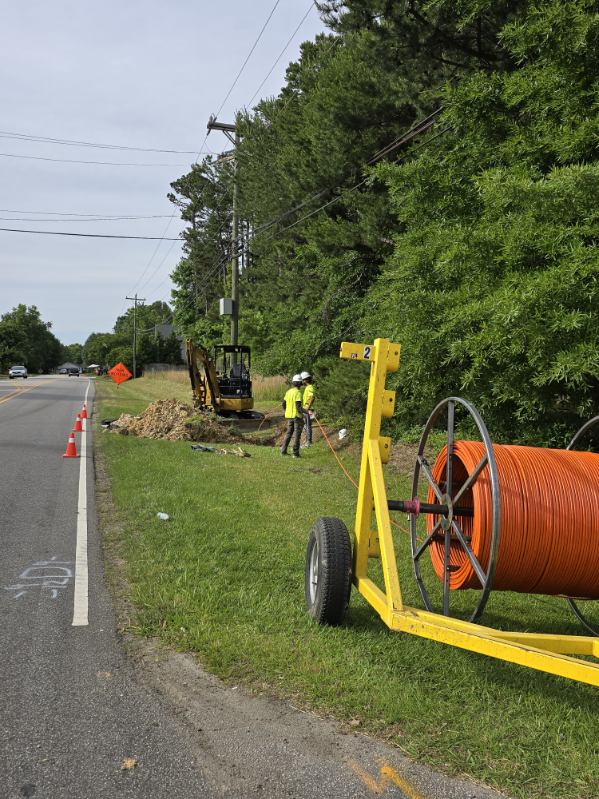In an era of aging infrastructure and growing urban density, the disruptive practice of open-cut excavation is increasingly being replaced by sophisticated trenchless technologies. For engineers, project managers, and municipal planners tasked with installing critical 36-inch pipelines for water, sewer, or utility conduits, the question isn’t whether to use trenchless methods, but which one. Two leading techniques dominate the conversation: Horizontal Directional Drilling (HDD) and Pipe Jacking.
Understanding the cost per meter and operational efficiency of each method is paramount for project success. As a trusted leader in HDD and utility installation across the challenging terrains of the Midwest and Southeast, Underground Drilling, LLC provides the data-driven insight needed to make an informed decision.
An Overview of Trenchless Titans: HDD and Pipe Jacking
Trenchless technology has revolutionized pipeline installation by minimizing surface disruption, reducing environmental impact, and often lowering overall project costs in congested or sensitive areas. For major 36-inch pipelines, the choice typically narrows to HDD or Pipe Jacking.
Horizontal Directional Drilling (HDD)
HDD is a steerable, trenchless method ideal for installing pipelines beneath obstacles like rivers, roadways, and wetlands. The process involves three key stages:
- Pilot Bore: A small-diameter drill string creates a preliminary path along a designed alignment.
- Reaming: The pilot hole is enlarged to a diameter sufficient to accommodate the product pipe, typically 1.5 times the pipe’s outer diameter.
- Pullback: The final product pipe (often HDPE or steel) is pulled back through the reamed hole.
HDD is celebrated for its minimal surface footprint, long installation capabilities, and flexibility across various soil conditions.
Pipe Jacking
Pipe Jacking is a microtunneling technique where specially designed pipes (typically reinforced concrete or steel) are hydraulically jacked directly through the ground from a launch shaft. As the tunnel face is excavated, often by a tunnel boring machine (TBM), new pipe sections are added sequentially from the launch pit. This method is highly precise and is the go-to solution for deep sewer lines and other gravity-fed systems where exact line and grade are non-negotiable. Its primary requirement is the construction of substantial launch and reception shafts.
Cost Comparison: HDD vs. Pipe Jacking for a 36-Inch Pipeline
While every project is unique, general industry cost ranges provide a foundational understanding. For a 36-inch pipeline, costs are influenced by soil type, depth, project length, and surface constraints.
Factors That Significantly Impact Your Project’s Cost
Beyond the high-level numbers, several project-specific variables will determine the final price tag.
- Geotechnical Conditions: In the Midwest’s sticky clay and the Southeast’s sandy soils, HDD is highly efficient. However, encountering unanticipated rock or boulders can increase HDD costs significantly through wear on tools and slower production rates. Pipe jacking, with its robust TBMs, is often better suited for challenging, unstable ground or mixed-face conditions.
- Project Length & Depth: HDD’s cost-efficiency improves with distance, as the mobilization cost is spread over more meters. Pipe jacking’s costs are heavily tied to shaft construction, which makes it less economical for very long runs but often the only choice for exceptionally deep installations.
- Surface Constraints: HDD is unparalleled for crossing beneath a developed area, wetland, or major highway with virtually no disruption. Pipe jacking requires significant surface space for shaft excavation and spoils removal.
- Pipe Material: HDD primarily uses flexible pipes like HDPE or steel that can be pulled around curves. Pipe jacking uses rigid, jointed concrete or steel pipes, which provide inherent structural strength but are not suitable for curved alignments.
Advantages and Limitations at a Glance
HDD: Advantages and Limitations
- Minimal surface disruption and restoration costs.
- Faster mobilization and execution for suitable projects.
- Cost-effective for long-distance installations.
- Environmentally friendly with a small footprint.
- Can be challenging in solid, un-fractured rock.
- Requires careful planning to maintain steering accuracy at great depths.
- Not suitable for gravity-flow applications that require precise grade control.
Pipe Jacking: Advantages and Limitations
- Excellent line and grade control, critical for gravity-flow systems.
- The installed pipe is the final structure, providing immediate structural support.
- Effective in a wide range of ground conditions, including soft ground and rock.
- High upfront cost for shaft construction.
- Slower progress rates, making long-distance projects very expensive.
- Significant surface disruption and traffic management required at shaft sites.
Which Method Is Right for Your 36-Inch Pipeline Project?
Use this simple decision framework to guide your initial selection:
Choose Horizontal Directional Drilling (HDD) if your project involves:
- Crossing under a river, roadway, railway, or protected wetland.
- A pressure pipeline (water, force main, utility conduit) where slight alignment deviations are acceptable.
- Medium to long distances where minimizing surface impact is a top priority.
- Soil conditions consisting of clay, sand, or fractured rock.
Choose Pipe Jacking if your project involves:
- A deep gravity-fed sewer or stormwater line requiring exact grade.
- A short-distance installation where deep shafts are already required for other reasons.
- Very unstable soil conditions that require continuous structural support immediately behind the cutter head.
- A situation where the pipeline itself must serve as the permanent tunnel structure.
Both HDD and pipe jacking are proven, efficient trenchless methods for installing 36-inch pipelines. The more cost-effective option is not a universal constant but a variable dictated by your project’s specific depth, length, alignment, and performance requirements.
For a majority of crossings and long-distance utility installations, HDD emerges as the leader in efficiency and cost savings. By choosing Underground Drilling, LLC, you gain a partner with the local knowledge and technical prowess to ensure your project’s success, delivering reliable, high-quality infrastructure that communities can depend on for decades to come.
Why Partner with Underground Drilling, LLC?
When efficiency, cost-control, and regional expertise matter, the choice in trenchless partner is as critical as the choice in method. Underground Drilling, LLC specializes in providing advanced Horizontal Directional Drilling services tailored to the unique demands of the Midwest and Southeast.
We understand that the clay soils of the Mississippi Delta and the variable geology of the Appalachian foothills present distinct challenges. Our experienced crews, equipped with state-of-the-art drilling rigs and guidance technology, deliver engineered precision for your most complex 36-inch pipeline installations. We pride ourselves on cost transparency, environmental compliance, and a commitment to completing projects on time and on budget.
If you’re comparing HDD vs. pipe jacking costs for your next pipeline project, consult with Underground Drilling, LLC. Our experts provide detailed geotechnical assessments and cost-effective HDD solutions designed for your specific terrain and specifications

